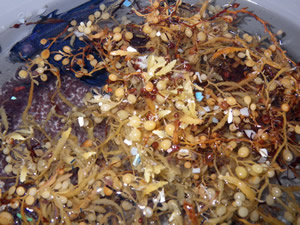Students at SEA collected tens of thousands of plastic pieces at 6,100 offshore locations. This image shows sargassum, plastic, and a flying fish that was collected from a net.
Click on image for full size
Image Courtesy of Sea Education Association
Marine Scientists, Students Find Widespread Floating Plastic Debris in North Atlantic Ocean
A team of researchers from the Sea Education Association (SEA), Woods Hole Oceanographic Institution (WHOI), and the University of Hawaii (UH) has conducted a study of plastic debris in the ocean based on data collected over 22 years by undergraduate students.
The western North Atlantic Ocean contains high concentrations of plastic debris, comparable to those observed in the region of the Pacific commonly referred to as the "Great Pacific Garbage Patch."
More than 64,000 individual plastic pieces were collected at 6,100 locations sampled yearly over the course of the study. A plankton net was used to collect plastic debris as well as biological organisms at each station.
Scientists have been trying to answer the following question: What happens to all that plastic once it gets to the ocean currents? And how does it interact with deep-sea biology?
An interesting finding from this research is that the concentration of floating plastic hasn't increased in the 22 years of this study, even though more plastic has been put into the ocean. Scientists think that the growth of algae and other invertebrates on the plastic changes it over time and causes it to sink.
To learn more about Sea Education Association's mission and programs, please visit their website.
You might also be interested in:
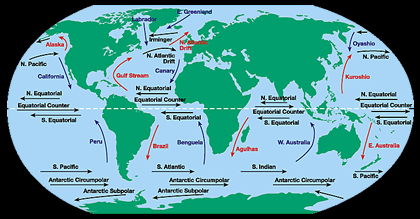
The water at the ocean surface is moved primarily by winds that blow in certain patterns because of the Earth’s spin and the Coriolis Effect. Winds are able to move the top 400 meters of the ocean creating
...more
Scientists have learned that Mount Hood, Oregon's tallest mountain, has erupted in the past due to the mixing of two different types of magma. "The data will help give us a better road map to what a future
...more
The Earth's mantle is a rocky, solid shell that is between the Earth's crust and the outer core, and makes up about 84 percent of the Earth's volume. The mantle is made up of many distinct portions or
...more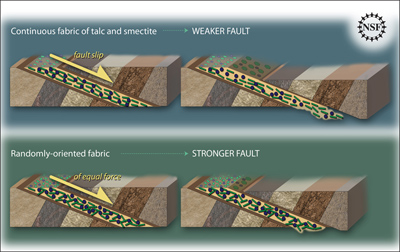
Some geologic faults that appear strong and stable, slip and slide like weak faults, causing earthquakes. Scientists have been looking at one of these faults in a new way to figure out why. In theory,
...more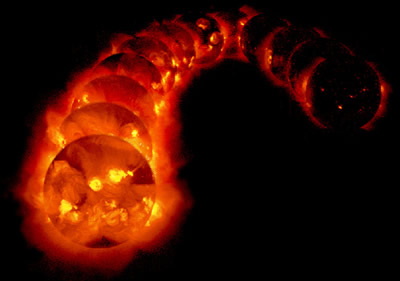
The sun goes through cycles that last approximately 11 years. These solar cycle include phases with more magnetic activity, sunspots, and solar flares. They also include phases with less activity. The
...more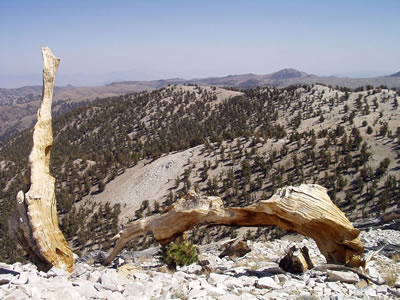
Studying tree rings doesn't only tell us the age of that tree. Tree rings also show what climate was like for each year of a tree's life, which means they can tell us about climates of the past and about
...more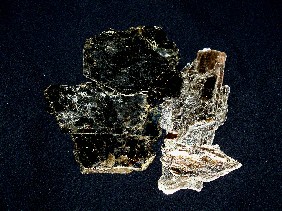
Earth's first life form may have developed between the layers of a chunk of mica sitting like a multilayered sandwich in primordial waters, according to a new hypothesis. The mica hypothesis, which was
...more


